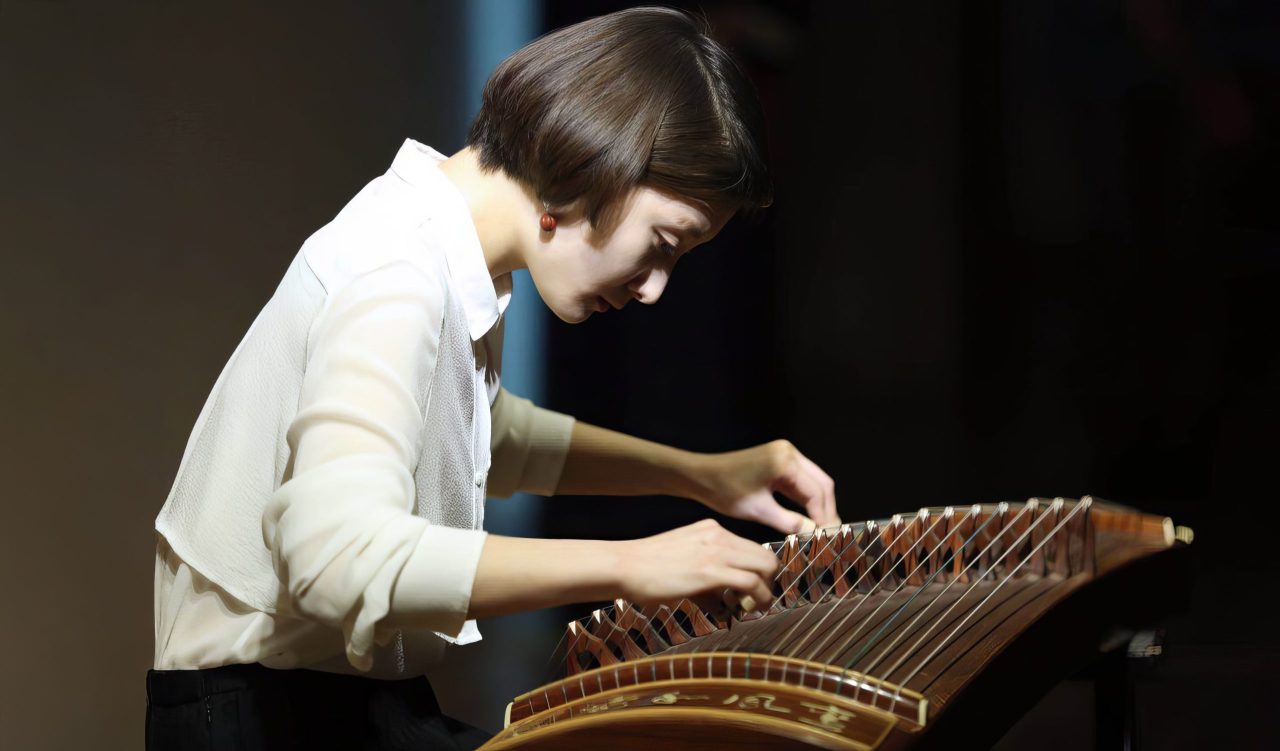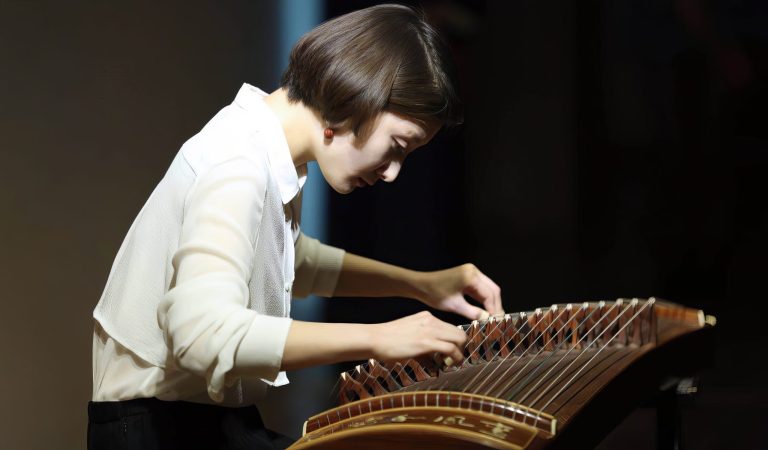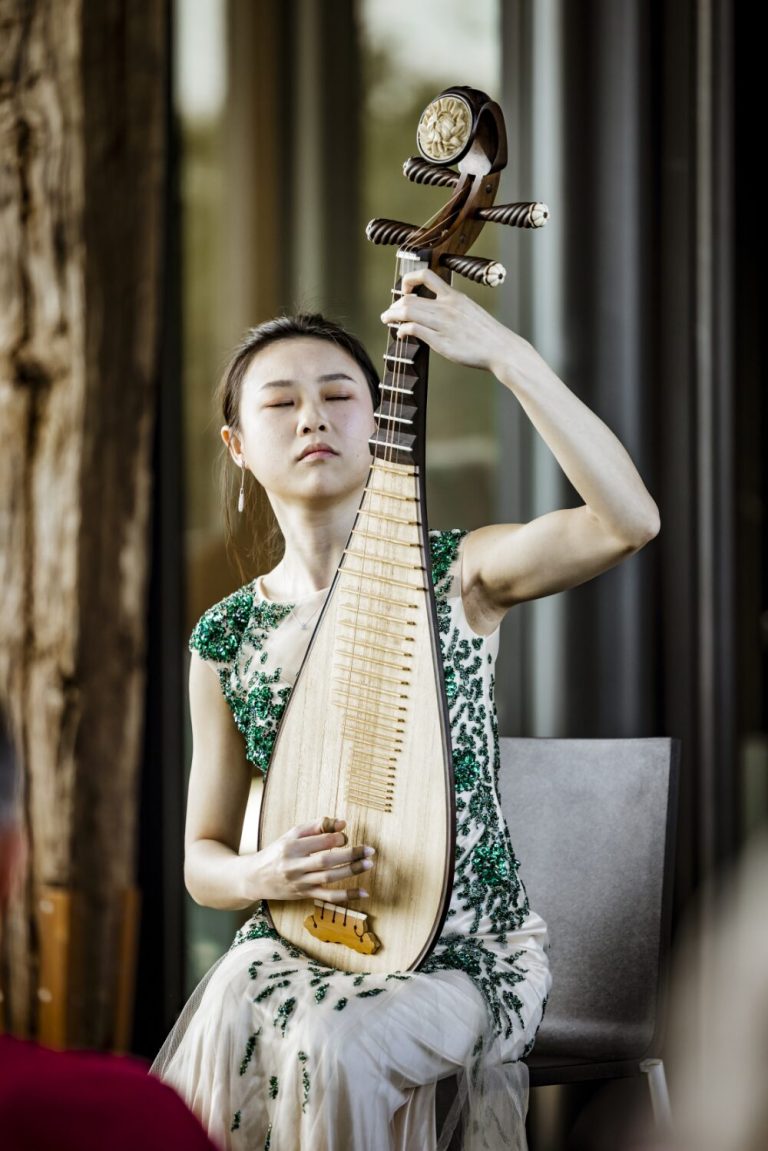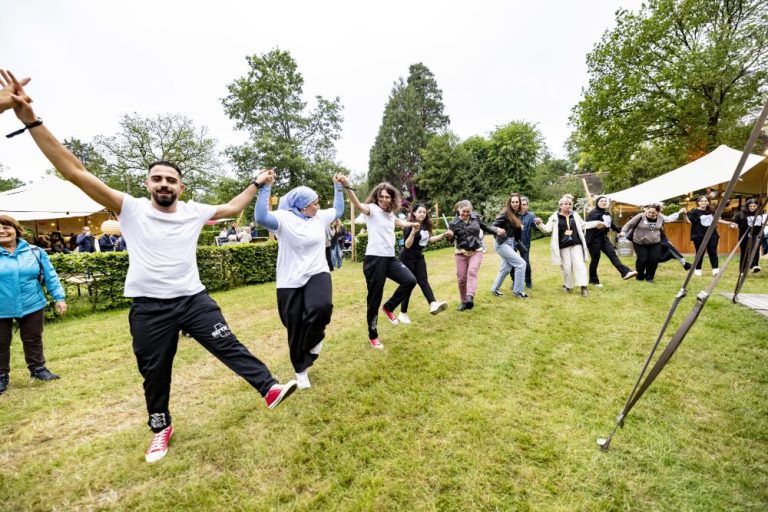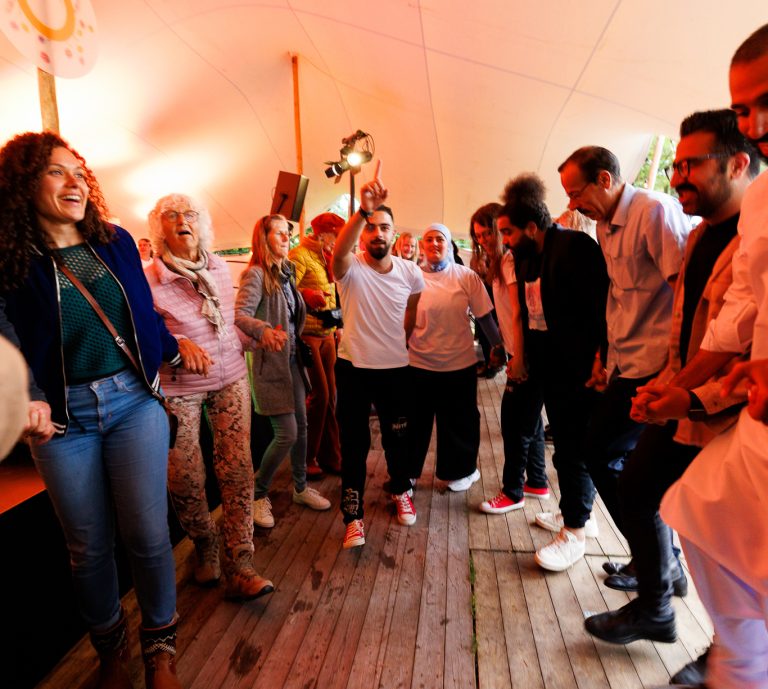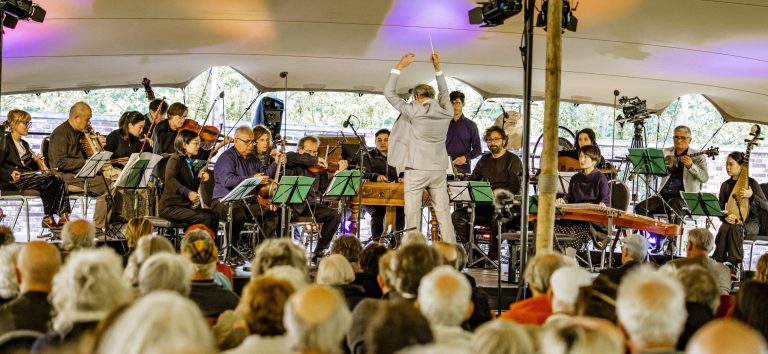Performers
- Liangzi Li, zheng
- Nizar Rohana, ud More about nizarrohana.com
Read more about the instruments
The zheng is an ancient Chinese zither. It was developed from a small instrument made of bamboo, originally used by shepherds. It was very popular in ancient times, as early as the Warring States Period and the Qin Dynasty (225 to 206 B.C. and earlier). The zheng has a curved surface and is oblong-trapezoidal in shape with 13 to 25 strings stretched across individual bridges. Although metal strings are common today, in ancient times the strings were silk. The zheng rests on two pedestals and is played with imitation nails. On the right side of the bridges, both hands pluck the strings and on the left side, left fingers bend the strings to change the pitch or provide ornamentation. The playing range spans three to four octaves. The zheng has a unique, rich expressiveness and is played with finesse. The kayagum and the koto are the Korean and Japanese relatives of the zheng.
The ud is the most important musical instrument in Middle Eastern music: it has been called the "sultan of instruments. Its name is derived from the Arabic word for "wood. This refers to the strips of wood used to make the round body. The neck of the ud, which is short compared to the body, has no frets and this contributes to its unique sound. This also allows the musician to play the microtones (between the half steps of a 12-note chromatic scale) needed for most Arabic and Turkish music. The most common string combination is five pairs of strings tuned in unison and one bass string. The strings are generally made of nylon or gut and are plucked with a pick known as a risha or mizrap. Another distinctive feature of the ud is its head, with the tuning pegs bent backward at an angle to the neck. The ud used in the Arab world differs slightly from those used in Turkey and Armenia. Different tunings are used and the Turkish ud has a brighter tone than its Arab counterpart. The ud is the ancestor of the Chinese pipa, the Japanese biwa, the European lute ('al 'ud became 'lute) and eventually the guitar.
